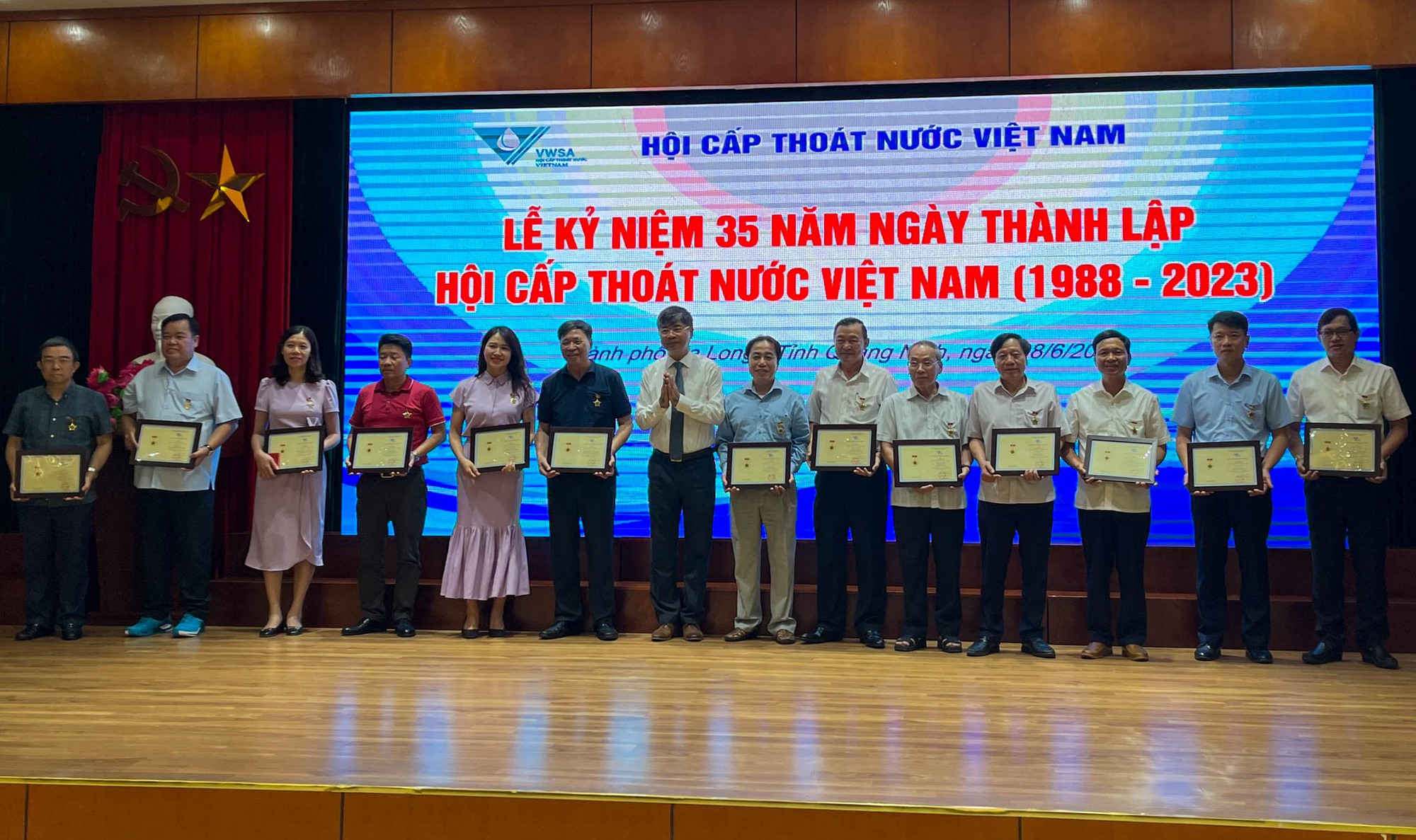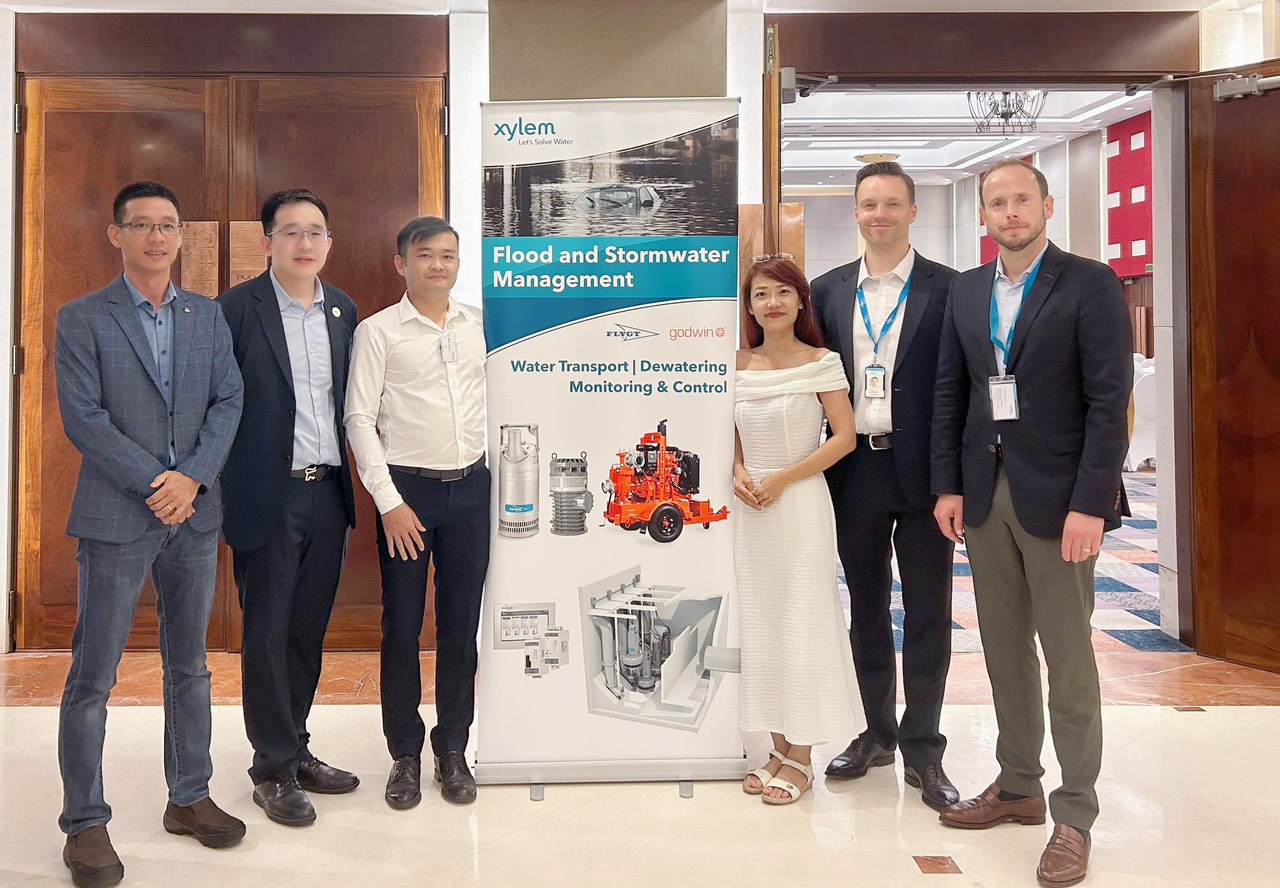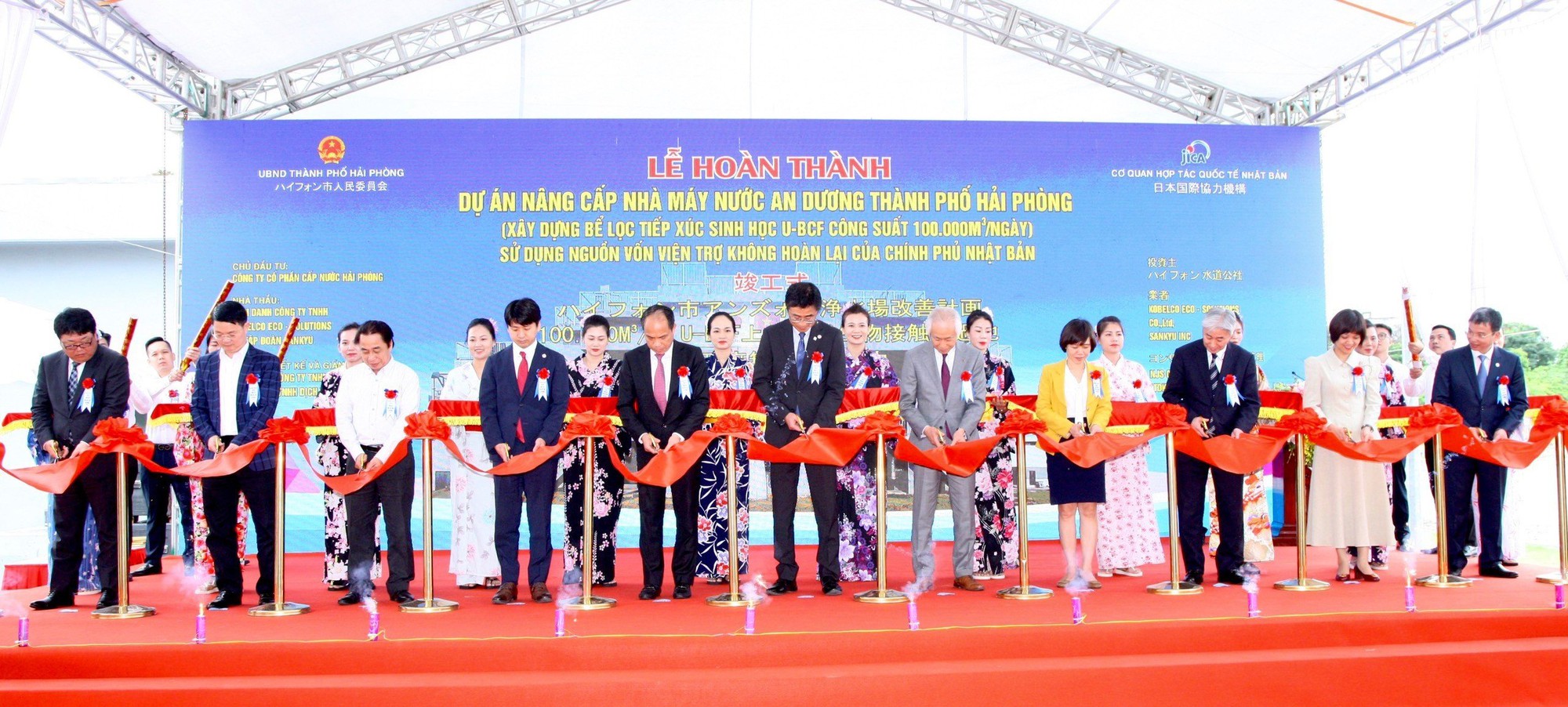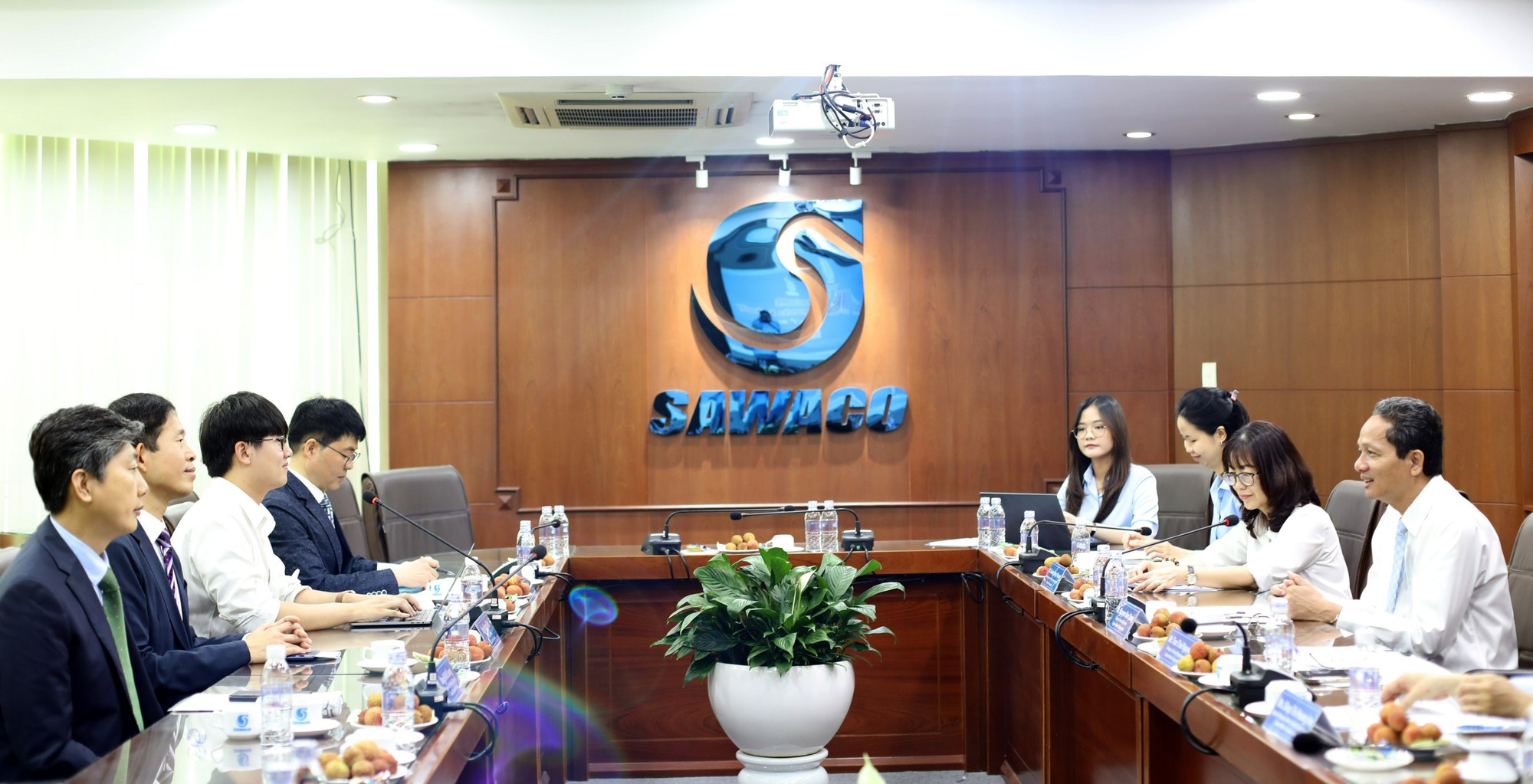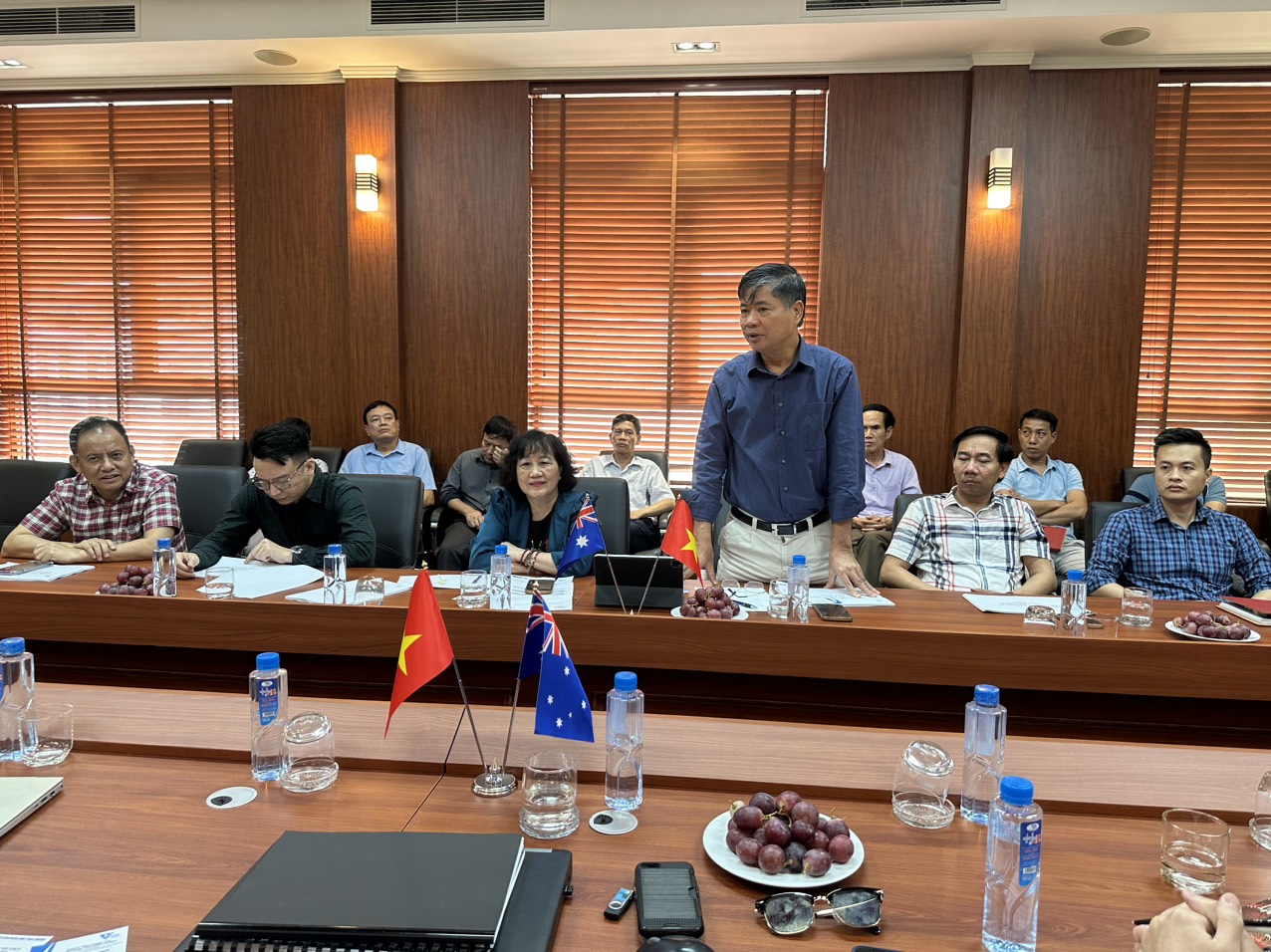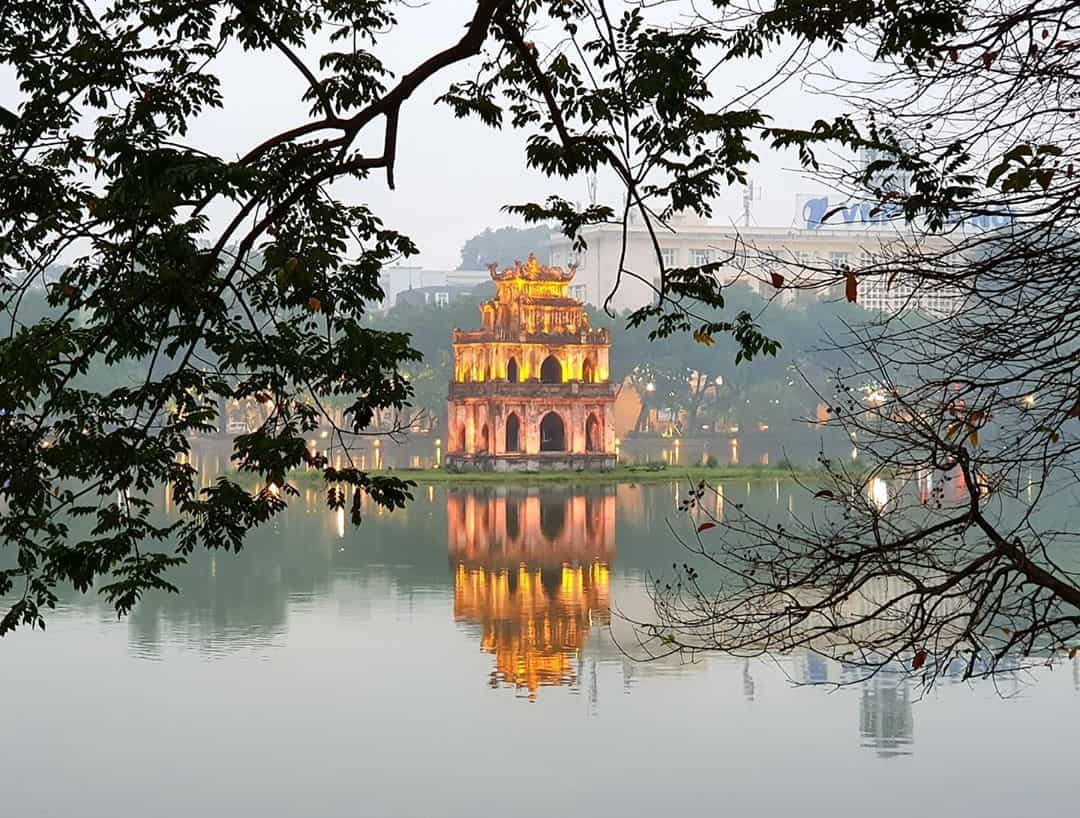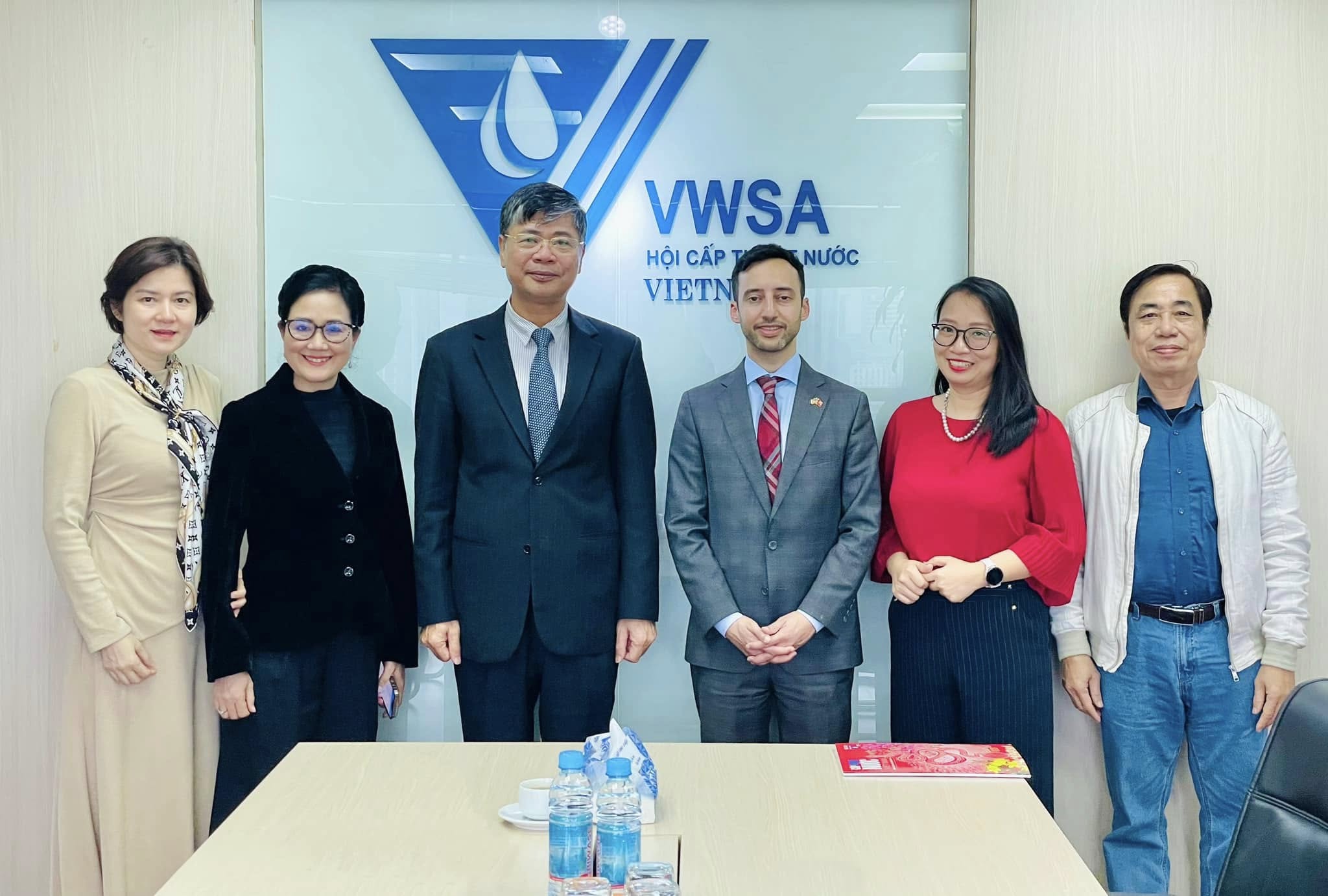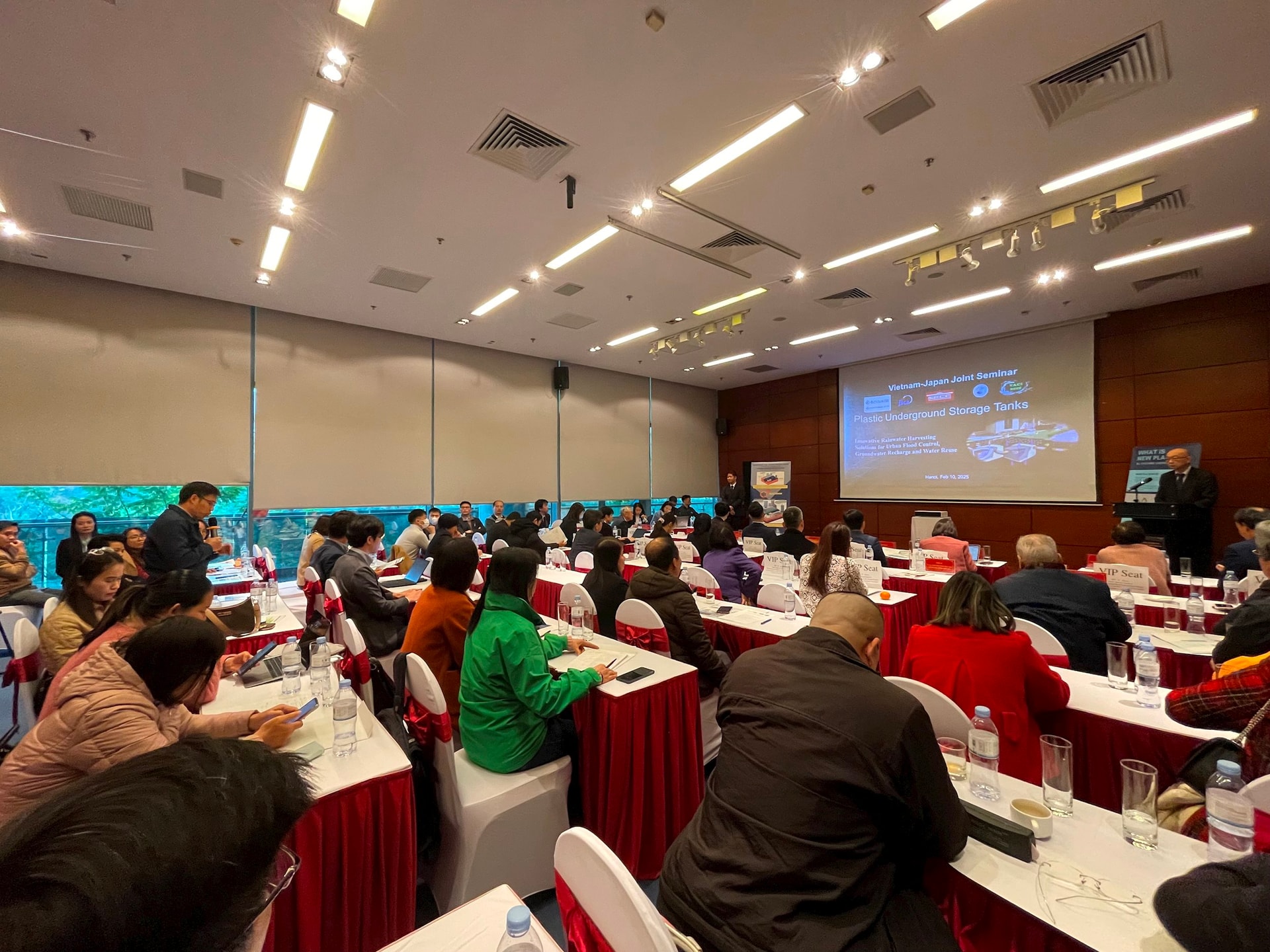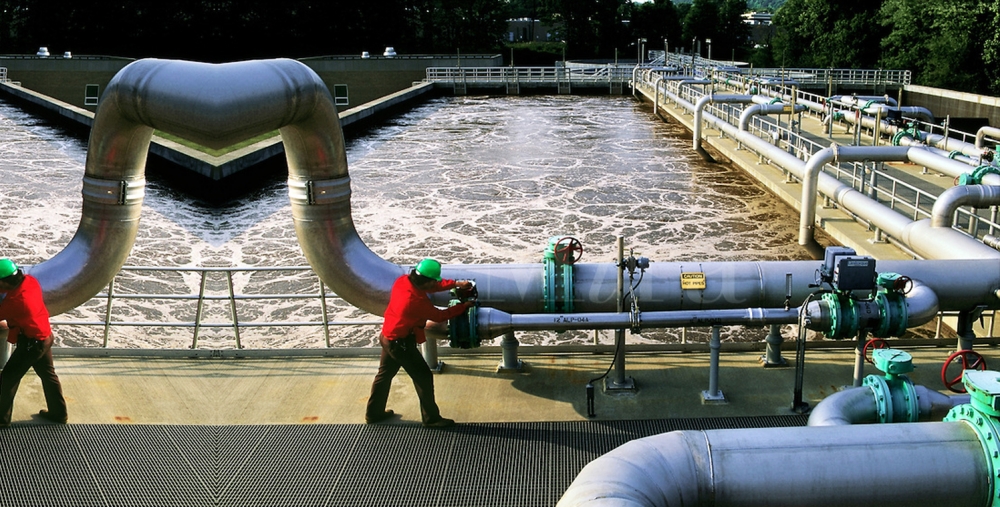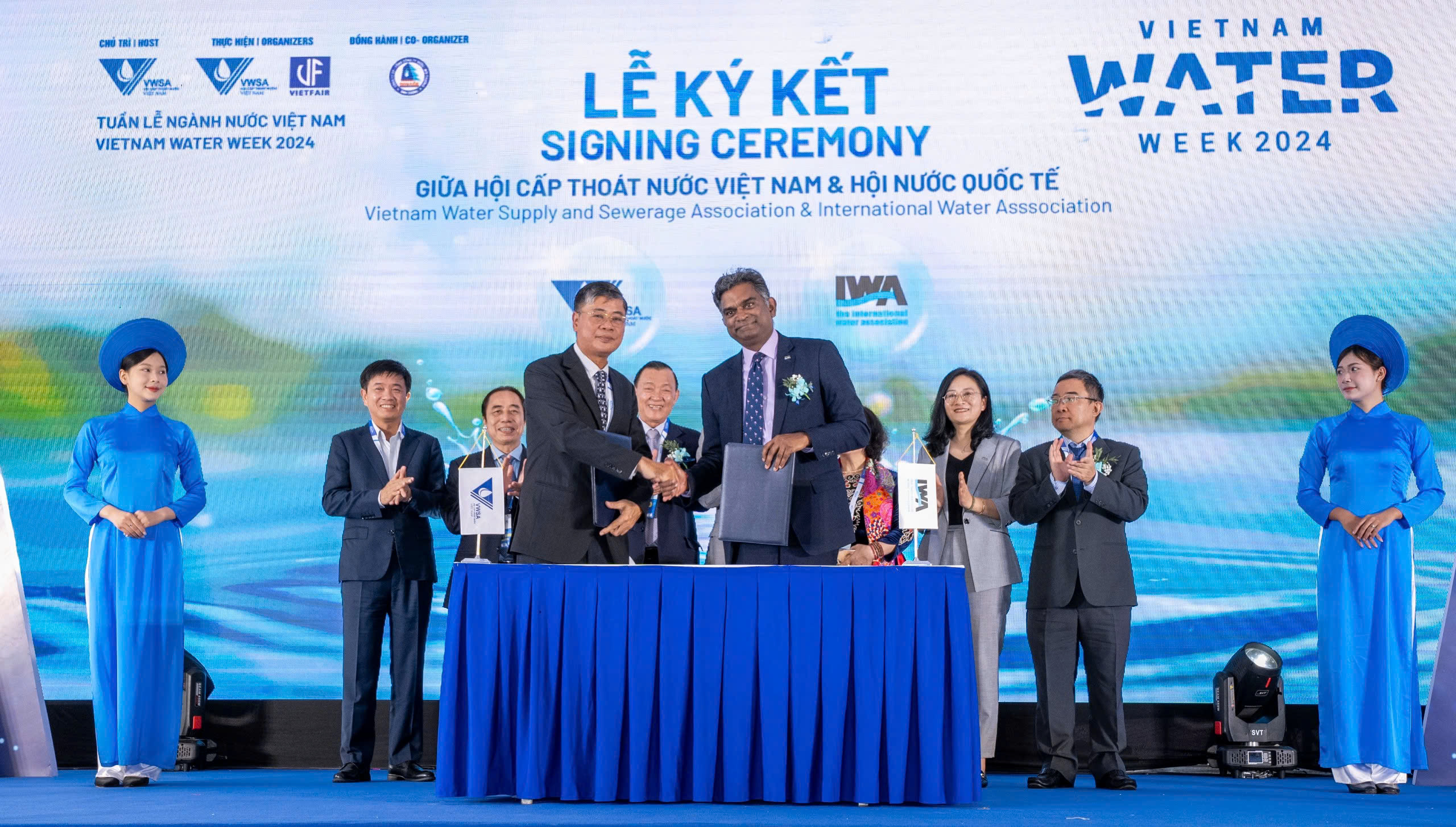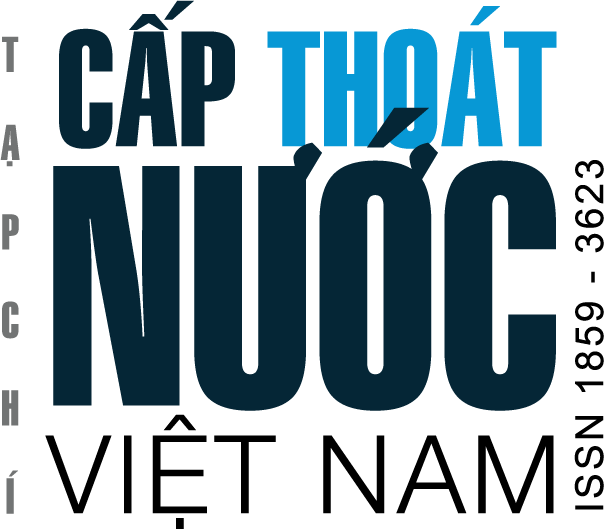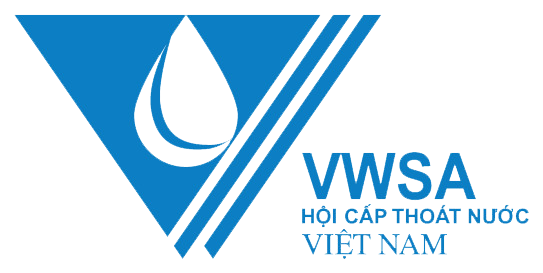The Vietnam - Japan Seminar on "Underground Plastic Rainwater Storage Tanks: Innovative Solutions for Urban Flood Control, Groundwater Recharge, and Water Reuse
At the seminar, delegates focused on discussing the solution of using underground plastic water storage tanks in urban water management systems across Vietnam; raising awareness about the benefits of underground plastic rainwater storage tanks in rainwater harvesting and flood mitigation. Experts from Vietnam and Japan also shared successful case studies and best practices from other urban areas.
On the morning of February 10, in Hanoi, the Vietnam-Japan Connection Seminar took place with the theme "Underground Plastic Rainwater Storage Tanks: Innovative Solutions for Urban Flood Control, Groundwater Recharge, and Water Reuse. Applying New Technologies to Enhance Water Resource Management Efficiency."
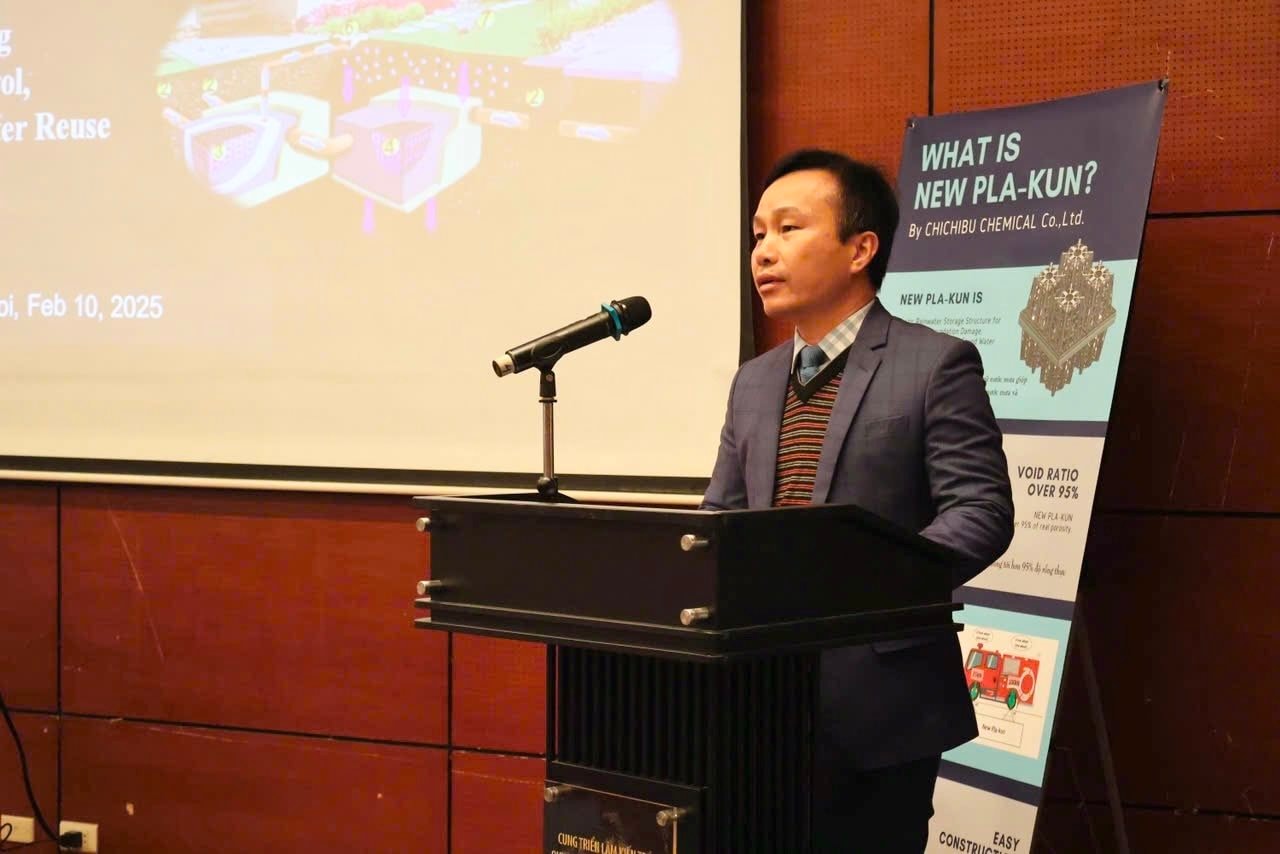
Mr. Trieu Duc Huy, Deputy General Director of the National Center for Water Resources Planning and Investigation, delivered a speech.
Speaking at the seminar, Mr. Trieu Duc Huy, Deputy General Director of the National Center for Water Resources Planning and Investigation, emphasized the significant challenges posed by rapid urbanization and the impacts of climate change on water resource management in Vietnam, especially in densely populated urban areas. Increasing urban flooding, declining groundwater levels, and water scarcity are becoming more severe, requiring innovative, sustainable, and environmentally friendly solutions.
Mr. Trieu Duc Huy also stated that, with the goal of developing a circular economy, the Vietnamese government has issued several important policies, such as the National Program on Circular Economy, aiming for net-zero emissions by 2050, Politburo Conclusion No. 36 on ensuring water security by 2045, and the 2023 Water Resources Law. All of these highlight the importance of optimizing water use, reusing rainwater, and applying new technologies to enhance water resource management efficiency.
This seminar was a valuable opportunity for experts, researchers, businesses, and policymakers from Vietnam and Japan to share practical experiences, update the latest technological advancements, and discuss policy directions suitable for Vietnam's actual conditions.
Underground Plastic Rainwater Storage Tanks: A New Solution for Urban Flood Control
Mr. Hisahito Yoshida, President of Chichibu Chemical Company of Japan, stated that the underground plastic rainwater storage tank solution has been successfully implemented in many countries worldwide, delivering practical benefits. Experiences from countries like Japan show that this technology offers potential solutions to reduce urban flood risks, recharge groundwater, and optimize water reuse. Integrating these solutions into urban infrastructure not only alleviates flood burdens but also contributes to water security and sustainable environmental development.
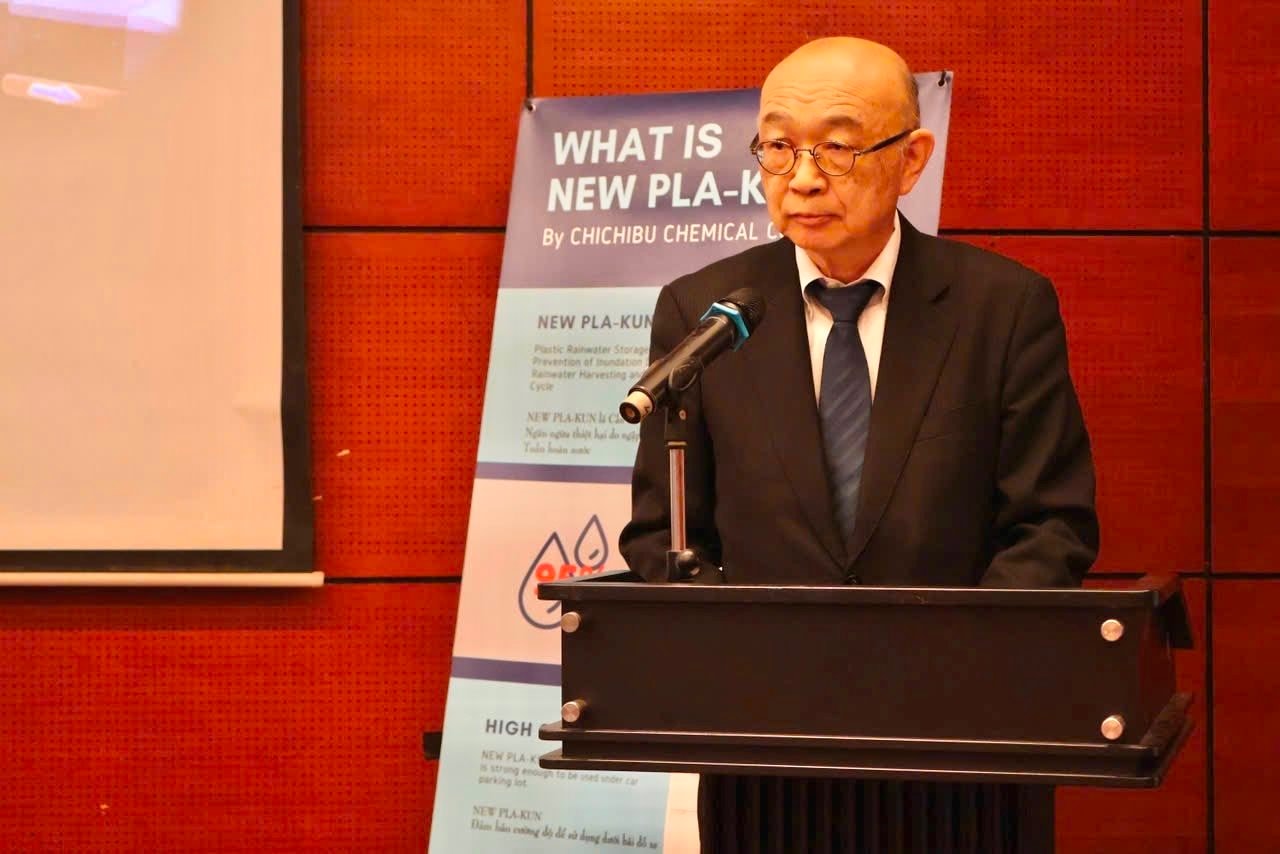
Mr. Hisahito Yoshida, Chairman of Chichibu Chemical Company of Japan, shared at the Conference
Mr. Hisahito Yoshida also emphasized that, in the context of increasingly complex climate change, in a country like Vietnam where motorcycles are the primary means of transportation, the impact and damage caused by flooding are significant. Therefore, the use of underground plastic rainwater storage tanks in major cities and industrial zones in Vietnam is crucial. He hopes this seminar will open up opportunities for cooperation between management agencies and businesses from both countries in disaster and flood prevention.
Sharing on Sustainable Drainage Solutions and Practical Applications in Vietnamese Urban Areas
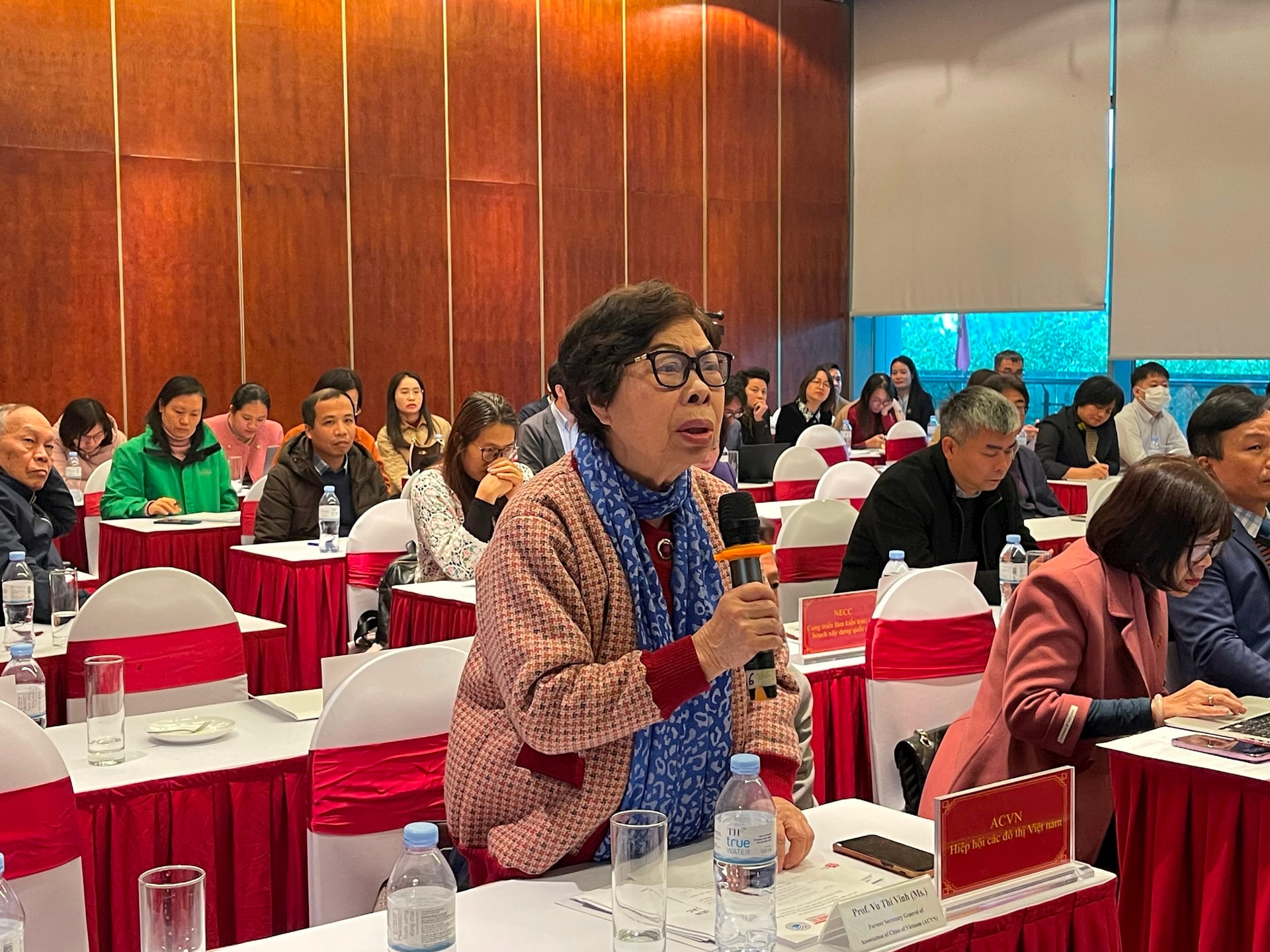
PGS.TS Vũ Thị Vinh, Chuyên gia quản lý hạ tầng kỹ thuật đô thị chia sẻ tại Hội thảo
Assoc. Prof. Dr. Vu Thi Vinh, an expert in Urban Technical Infrastructure Management and former Secretary-General of the Vietnam Urban Development Association, stated that sustainable drainage is an approach to managing rainwater and drainage to minimize the negative impacts of urbanization on the natural environment.
The Sustainable Urban Drainage System (SUDS), proposed by the UK Construction Industry Research and Information Association (CIRIA), integrates sustainable development ideas into the drainage system design process. This means that the impacts of the drainage system do not alter the flow at the source and do not transfer risks from one place to another. Besides contributing to sustainable urban development, the drainage system can be designed to improve urban spaces and manage environmental risks.
Regarding the current state of urban drainage systems in Vietnam, Assoc. Prof. Dr. Vu Thi Vinh noted that most urban areas in Vietnam use combined drainage systems, which collect both rainwater and domestic wastewater in the same sewer. This often leads to sewer overload during heavy rains. Additionally, many drainage systems were built long ago and cannot meet the current demands of urbanization. Small pipe diameters and insufficient drainage capacity during heavy rains are common issues. Major cities like Hanoi, Ho Chi Minh City, and Da Nang frequently experience localized flooding due to inadequate drainage systems.
To manage rainwater and drainage to minimize the negative impacts of urbanization on the natural environment, Assoc. Prof. Dr. Vu Thi Vinh suggested that local leaders should enhance training and capacity building for local officials to operate, maintain, and plan suitable projects; mobilize multi-source funding, including state budgets, private enterprises, and international support; and raise community awareness through communication programs on the benefits of sustainable drainage. Particularly, it is essential to focus on improving the legal framework and coordination between management agencies and local authorities to support the scaling up of effective projects.
At the household level, sustainable drainage solutions are proposed, such as green roofs, rainwater collection and reuse tanks to limit the rapid runoff of rainwater into the drainage system and reduce pressure on traditional sewers; filtering rainwater before discharging it into the environment to remove pollutants like oil, dirt, and waste.
Sustainable drainage solutions often integrate with urban landscapes, creating green spaces and improving quality of life, such as regulation ponds and permeable areas; reusing rainwater for daily activities (watering plants, cleaning, etc.) and recharging groundwater.
Introducing the Technology of Underground Plastic Rainwater Storage Tanks
Mr. Hideyuki Muofushi from Chichibu Chemical Co., Ltd., Japan, introduced the New Pal-kun, a plastic rainwater storage structure (PRSS) primarily developed to prevent flood disasters by temporarily storing rainwater underground. This structure is highly durable, with a porosity of over 95%, and is easy and quick to install.
Even the largest piece of New Pal-kun weighs only 3 kg, making it easy to carry and install manually without additional construction machinery. Thanks to its unique design and raw materials, the upper surface can be utilized as a parking lot or playground.
The PRSS is divided into two types: permeable and impermeable. The permeable type allows rainwater to seep into the ground through a permeable membrane, contributing to groundwater recharge. The impermeable type can store rainwater and prevent flooding. Additionally, rainwater can be used for various purposes by modifying the drainage system. The impermeable type is also effective in areas with high groundwater levels.
Source: Natural Resources & Environment Newspaper
